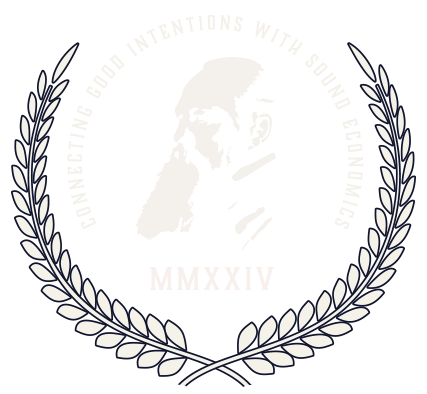Who killed communism? Western analysis (and not a few communists) first pointed the finger at the economic incapacities of Marxist-Leninist states. In a world defined by silicon chips and fiber-optic cables, communism–it was argued–just couldn’t compete. This gimlet-eyed focus on the economic causes of the collapse always seemed, though, an oddly Marxist “answer” to the puzzle. Happily, more thoughtful analyses based on a better understanding of the cast of characters in the gripping drama of the Marxist crack-up are now available.
That Pope John Paul II played an indispensable role in that demise is now widely conceded by numerous historians of (and actors in) the Cold War end-game–not least among them Mikhail Gorbachev. But the terms in which the pope’s role should be understood are likely to remain controversial. Former Washington Post reporter Carl Bernstein, who first wrote on this story for Time magazine, and Marco Politi, Vatican correspondent for the Italian daily La Repubblica, forcefully argue that the pope was a crucial protagonist in the struggle for freedom that began with the formation of Solidarity, the Polish trade union/political opposition, and ended with the implosion of the USSR. But their reading of these events through a conspiracy theory of history obscures at least as much as it illuminates about the many factors at work in this complex historical process, and misses the originality of analysis and prescription that John Paul II applied to the confrontation with totalitarianism.
Karol Wojtyla brought a formidable philosophical and theological intelligence and a distinctive reading of twentieth-century history to the Chair of Saint Peter on Oct. 16, 1978. As Wojtyla understood it, the division of Europe after the 1945 Yalta conference was primarily a moral catastrophe in which false conceptions of the human person, human community, and human destiny had been imposed by raw force on historically Christian cultures. Communism was not only stupid economics and brutal politics; it was, first and foremost, a false humanism. Indeed, the economic idiocies and political repressions of communist regimes were expressions of this more fundamental flaw in communist theory. Thus the most effective antidote to the communist toxin, Wojtyla believed, was in the order of ideas and values: A truer humanism, defending basic human rights as inalienable attributes of human personhood, was the weapon with which communism could best be resisted.
For Wojtyla there was not tension but rather a deep linkage between these human rights claims and the Christian Gospel. And on the basis of that conviction he articulated, as pope, an original and (as things turned out) astonishingly effective challenge to what politicians and international relations theorists had long assumed to be a given: the permanent division of Europe and communist hegemony east of the Elbe River. As Stalin famously queried, “And how many divisions has the pope?” But John Paul II had something more potent: a capacity to appeal to the consciences of peoples and nations, to the dignity of the human person, and to the vitality of ancient cultural traditions.
To the fury of the Soviet leadership, the pope put this approach into practice for more than two years before the Reagan administration took office in January 1981. Thus the Bernstein/Politi claim that communism was defeated by a secret “Holy Alliance” forged between John Paul II and President Reagan during a June 1982 private audience in Rome is out-of-sync historically. The authors’ interviews with former Rea-gan administration officials and some useful digging in recently released Soviet archival materials add interesting detail to the story of the 1980s. But their telling of the tale is frequently overwrought.
“There is no question,” Bernstein and Politi write, “that the pope offered [former CIA Director William] Casey his blessing” after one meeting in the early 1980s. No doubt he did, but that is precisely what he does dozens of times a day to those with whom he meets. Our authors find “equally stunning” the fact that “the CIA director and the supreme pontiff entered into a highly intimate, spiritual conversation.” But why should this be a surprise, given John Paul II’s fifty-year commitment to pastoral ministry with both the lowly and the mighty?
And then there is the depiction of the pope as intelligence link with U.S. Special Ambassador Vernon Walters in November 1981: “‘What is this?’ asked the vicar of Christ,” studying a photograph. “‘Heavy equipment, Holy Father’–military vehicles, personnel carriers, tanks, for use by Polish security forces.” While there is, undoubtedly, a fascination in imagining John Paul II hunched over satellite intelligence photography with Walters, there is no reason to think that what the authors hyperbolically describe as an “intelligence shuttle at the highest level” between Washington and Rome had a significant impact on the pope’s analysis of–or approach to–the struggle for freedom in east central Europe. John Paul II thinks about these matters in rather different terms than those employed by diplomats, military officers, and spy masters.
Bernstein and Politi’s “Holy Alliance” hypothesis is, in short, an exaggeration that distorts the singularity of Wojtyla’s approach to the churnings of history. That the Vat-ican and the White House had certain common interests in east central Europe is plain; that both the pope and the president suspected (against the counsel of their more traditional advisors) that the communist emperor had no clothes seems clear; that U.S. policy under Reagan and Vatican “Ostpolitik” under John Paul II were mutually reinforcing seems to have been borne out by events. But this does not amount to a “Holy Alliance” in the sense of an intimately coordinated effort to bring communism to its knees. The Bernstein/Politi hypothesis is thus an interesting reminder that viewing history through exclusively political-economic lenses fails to capture the human and moral texture of great events–a cautionary tale for anyone trying to discern the contours of a coming century in which questions of religion are sure to play a dominant role.
So give Bernstein and Politi full marks for recognizing the centrality of John Paul II in the “hidden history of our time.” But the true nature of that “hiddenness” had far less to do with intelligence-sharing and other ephemera of high politics than it did with the struggles that took place within the hearts, wills, and, yes, souls of men and women determined to live “in the truth,” as the anti-communist resistance in east central Europe used to put it.
His Holiness is even less satisfactory in its description of John Paul II’s impact on the Roman Catholic Church throughout the world. Reading Bernstein and Politi, one would never know that this has been a pontificate of great theological creativity, or that John Paul II has understood his work as securing the legacy of the reforming Second Vatican Council (in which he played a crucial role as archbishop of Krakow, a role the authors badly misrepresent). Bernstein and Politi cannot seem to grasp that, in exercising his teaching office on issues like sexual morality and the boundaries of theological speculation, Karol Wojtyla is not imposing his personal opinions on the Church in an authoritarian manner. Rather, he is articulating the authoritative tradition of Catholicism, of which he is the servant and custodian.
In fostering the image of an “angry pope” determined to “crush dissent,” the authors also ignore one of the central themes of John Paul II’s pontificate: As the pope put it in his landmark 1991 encyclical letter on missionary activity, “the Church persuades, she imposes nothing.” That a commitment to persuasion and a commitment to authoritative teaching are not mutually exclusive is, perhaps, something that Americans and other modern Westerners who equate freedom with individual autonomy find difficult to conceive. But one utterly misses the searching character of John Paul II’s radical challenge to the conventions of our time and our culture if one portrays him as an old man whom the fates have “left to rail at the new world he … helped bring about.”
Or, to vary James Carville, you can’t get at the uniqueness of Pope John Paul II, the man, the religious leader, and the public figure, if you don’t constantly remind yourself, “It’s the theology, stupid.”











